Three short weeks ago, we woke up to a coating of white on the ranch. Snow blanketed everything. The breaking buds on the willows and cottonwood trees looked hunched and bunched up from the cold, as if trying to stay warm. These species were both used to the maddening duel between winter and spring—no, summer. Last spring, we planted some new species. We tried putting a few maple trees in the front yard. Crimson King, they were called. Hardy to Zone 3, they said.
They never made it to feel the warmth of the summer sun on their leaves.
Instead, they simply froze, mercilessly smitten by the casualty of high-altitude exposure. I saw embryonic leaves on one; frozen and petrified by the cold winds. My heart sank; Caryl and I were both brought up in the Northeastern hardwoods; we were lovers of spreading sugar maples and stately red oaks.
We thought it was cold there, especially when we lived in Maine. There were times when we lived in the bush beyond the grid and the thermometer dipped below 40 below zero. You Celsius readers can relate to that temp. It’s the only place on the scale where the F and the C equilibrate to mean the same thing: dang cold.
Forty below was cemented in both of our brains because the thermometer was on the Northern Red Oak tree we passed on the way to the privy at night. In the flashlight’s glow we would see it. It was a sort of trauma you had to endure just to do your biz. It certainly kept the journey real.
Those maples and oaks lived and somehow thrived in that temp in the close spaces and high humidity of the hardwood forests.
But about 40 years ago, we both discovered the big open of the West. We couldn’t get enough of the vistas and the austerity. It was like some sort of drug for us. For a while, the more desolate it was, the better. And in the wide open, we found oases. Creeks full of cutthroat trout—far-off of trails or roads—days into the backcountry. We saw pristine alpine meadows with countless waterfalls. Never summer valleys studded with wildflowers for just a few weeks.
Then there were endless grassland and sage valleys that reached to distant horizons. Coyotes yipped harmonies we didn’t know. Herds of dust raising pronghorn and elk. It took a while, but a blood transfusion was taking place, and at that time, we didn’t even know it.
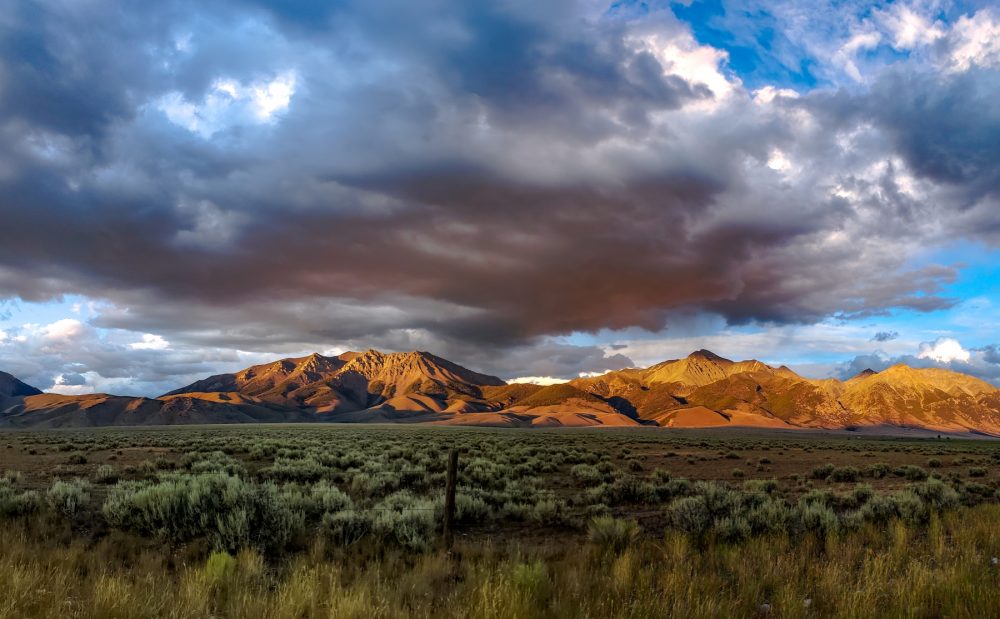
I think I came to realization that said serum exchange happened one day in the late 80s. My Mom and Dad were visiting. At that time, they still lived in the Northeast. We piled in our red 1974 Toyota Land Cruiser station wagon (top speed on highway: 45 mph) made for places like Africa’s Great Rift highlands on the slopes of Kilimanjaro and Australia’s Outback. The old wagon could climb up anything, and we crawled it up a scratched-to the mountainside rocky track up Freeman Creek in our backyard along the Continental Divide. As we summited the ridge, I pulled over and stopped Red in the high meadow, blanketed with wildflowers.
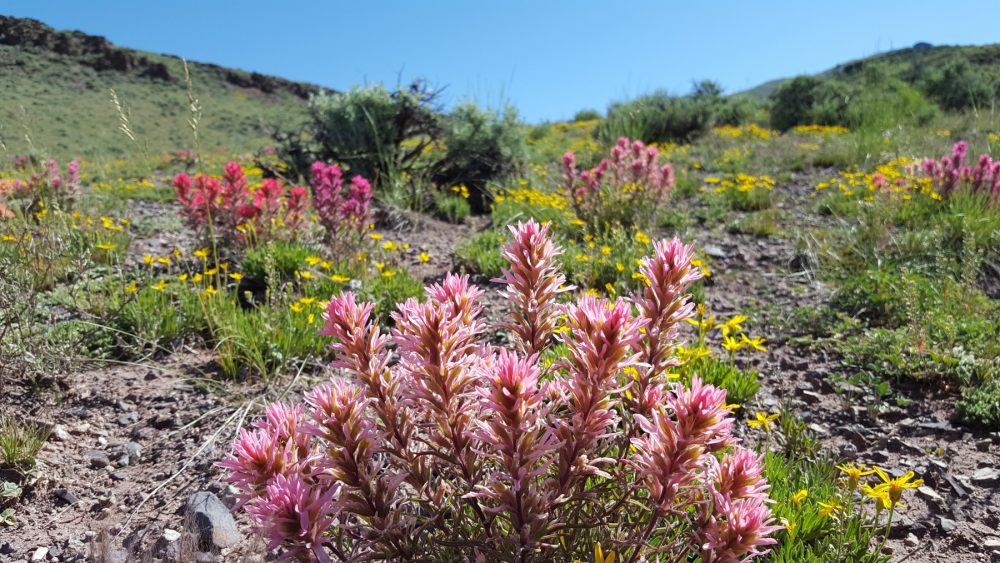
We got out, silent now because of the breathtaking view before us. Freeman is quite a crag, and its three-thousand-foot jumble of rock and snow on the peak’s imposing and near vertical west face was impossible to take one’s eyes away from.
We stepped into the striking color contrast borne by rustling leaves of balsamroot yellow sunflowers and purple lupine and stood.
It was my dad who broke the silence. Looking forward at the mountain, he simply said “You’re never coming back, are you?” He turned to make direct eye contact with me.
“No, Dad. We’re not.”
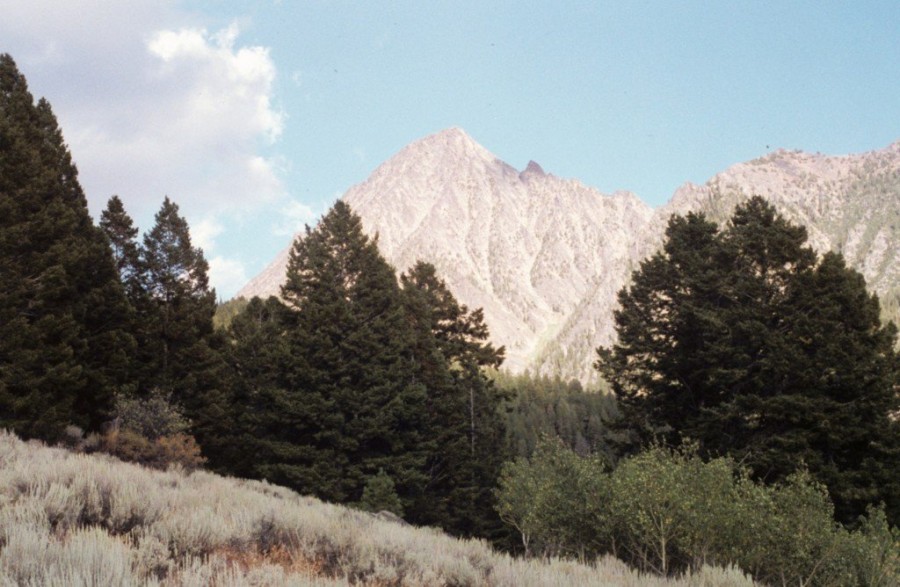
But things like maples and oaks are hard to get out of your bloodstream, so you bring them with you in your heart. We currently have a burr oak in the front yard that we think may be promising. It made it over the winter, and Caryl and I strategize how we might create enough microclimate around it with a veritable forest of cottonwood and aspen trees.
They live here. They have what it takes to handle the dry high altitude cold. They belong here.
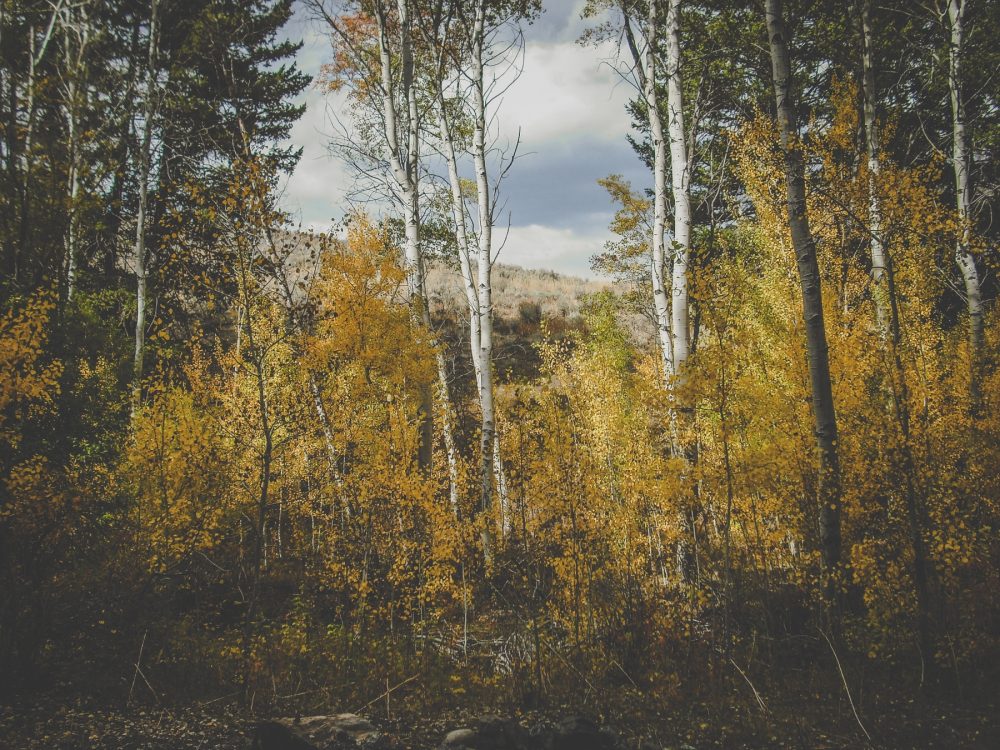
Caryl and I have adapted. We are no longer of oak and maple stock. We’ve become cottonwood, fir, pine, and aspens. It took all of forty years, but now, we love our place defined by topographic effects on weather. We live and mostly work in a rain shadow that some would call desert. But we see the very peaks that take the rain just a few miles distant; up there are verdant rock and moss gardens, resplendent with bloom and waterfall.
And with that adaptation, we’ve come into a sort of resilience. Instead of the tortuous foreboding of drought (which, ironically, despite snow and cold a few weeks ago, we are in—it finally ratcheted right up to the 90s this past week, and we are short on spring rains), we see opportunity. Just a few weeks ago we leased a hardscrabble place just down the valley. “You’ll never make money on that place,” a neighbor quipped. “The last 3 went bankrupt.”
But I guess we feel that there is only one way to go on a place like that: upward. The dirt is still there—the raw mineral material, and under our care, I’m thinking we can turn it again into soil, a living breathing matrix—an organism in its own right.
And on the ranges, it’s a different year. Melanie, Linnaea, and crews are taking a different tack about the lesser vegetation that drought has brought. Where other neighbors are cutting back their herds or not even turning them out on range, we are bringing more cattle up there than ever.
They’ll just get a larger spread on them. It’s the exact same thing we observe wildlife doing when grass is shorter. Herds become wider and more dispersed. It can be more challenging to keep them all together, especially with the specter of marauding packs of wolves always a possibility, but we’ve increased our range rider presence, and put hand-held radios in their hands to stay connected over the miles.
Caryl and I were up north in Missoula, Montana yesterday. While waiting for the dry ice truck to arrive for our bi-weekly 3100 lbs. to ship our beef with, I noted that Big Sky Canvas was just down the street. In the recently acquired heat wave we’ve been experiencing, they had their big bay doors open, and beckoned me in as I approached.
The place smelled not of chemical, but of cotton canvas, I thought. Big rolls of mostly white, but many other colors stood in racks and columns in the corners. Huge white tables bordered the big room, with a nook cut out where there was a sewing machine stationed on each table. I realized as I came in that this particular trade had been practiced for hundreds of years, as long as woven fiber cloth existed. Sails and tents were made from things like flax (linen) and sheep wool (the Vikings used this). In the mid-1800s, cotton largely replaced both, simply due to several inventions starting with Eli Whitney’s cotton gin and large broadlooms that made cotton cloth manufacturing the norm.
The crew greeted me as I stepped under the door, and immediately made some cutting comments about my height as I ducked through the opening, all the while smiling. I gave them a hard time right back, and I could tell we would be friends.
“What do ya need?”, the middle-aged t-shirt and shorts wearing man said.
I reached out my hand and introduced myself.
“Name’s Justin.”, he said.
I turned toward a middle-aged gal and took her hand.
“I’m Christine. What can we make for you?”
“I just was hoping you could make me up a couple manties. Seven by 7 would do just fine, and I could hem them up if you don’t have time.” Manties are sheets of stiff canvas, usually around those dimensions that horse and mule packers use to gather gear up in a sort of tucked jelly roll before loading said camp goods on the packsaddle bearing back of a willing animal.
“No, we have time. We’ll make them for you right here and now.” And so, they unrolled a pristine 18 oz canvas cotton roll on one of those large tables and began measuring and cutting. Our conversation drifted through ranching and pack animals into wall tents and the incredible demand they were seeing since COVID started.
“We are so far behind,” Justin began. “We’ve got people ordering tents from all over. I’m getting too old to work this hard.”
“I can relate,” I said.
Christine looked over at me. “You don’t look too old. How old are you?”
“Turning 60 next year.”
“But do you like what you do?”
I smiled. “I sure do. I just wonder how long I can work this hard, Christine. Many nights I don’t get any more than 4 hours sleep. Some days I don’t even stop to eat.”
“But if you like what you do, what’s the point of quitting?”
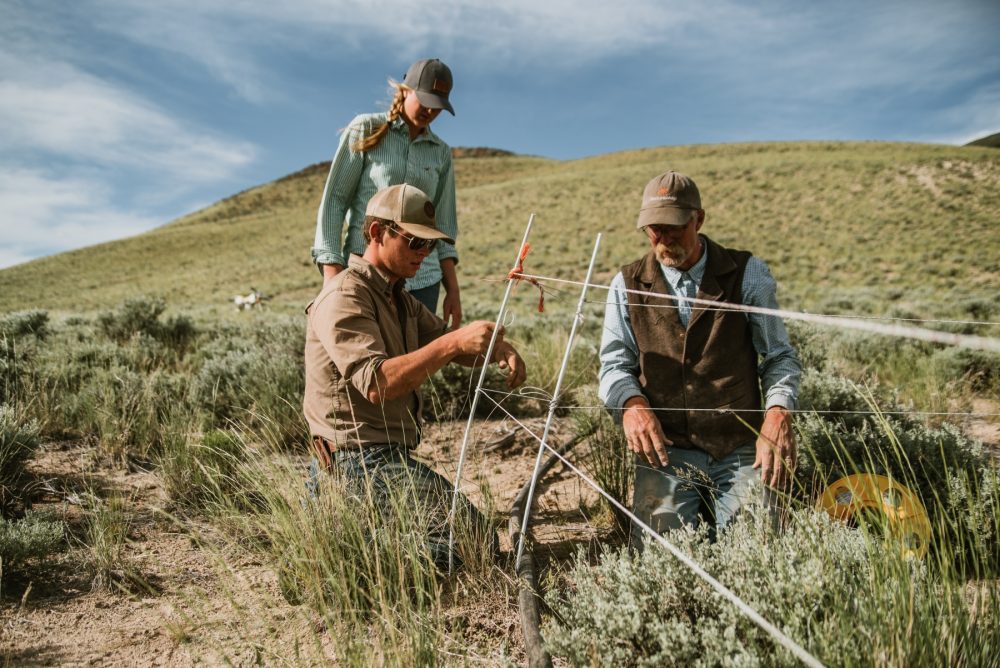
And Caryl and I have thought about that often. Although we do need to slow down so the stress doesn’t get to us, quitting is the last thing on our minds. It’s because the land and the animals and the team we work with has gotten into our bloodstream. It’s in our DNA. What we do is who we are.
And the land and nature, well, they’ve become partners. We’ve learned that when we work with them—even weather, we always learn, even if it is the exact opposite to what most folks do in agriculture.
Case in point: the neighbors are tearing up a 300-acre field just down the road. It was covered with grass—sure, it wasn’t the species diversity that we would like to see in one of our pastures, but it was grass. The soil was covered. It was safe. And as I write this, they are tearing the whole thing asunder with plow and disk for a barley monoculture. With those passes by the plow, they sent tons of carbon into the air by volatilizing all the life and living in that soil.
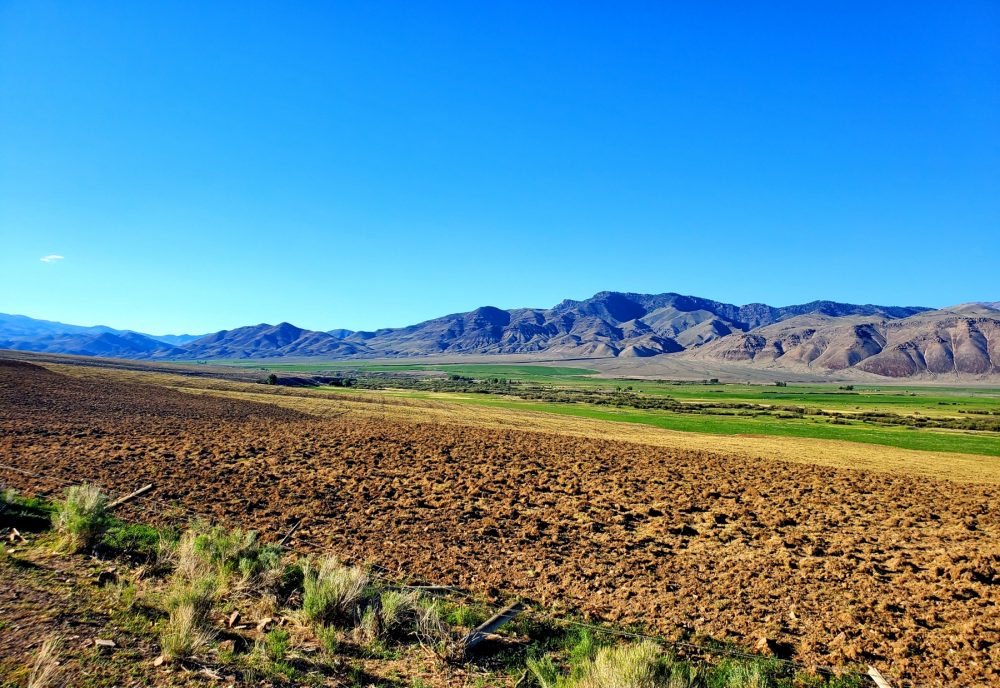
They were making dirt and desert and were hard at it. Caryl and I drive by with a mix of emotion ranging from anger to sadness. Anger not at the owner who thinks they are doing right. Instead, we direct anger at the educators and ag advisors who should know better. Sadness for their loss, and ours, because when we farm this way, all of us lose.
Today, the wind is blowing, and there is a brown cloud rising from their fields. It is their bank account, their soil capital, eroding, evaporating, volatilizing.
It galvanizes us, creating a steely resolve to make things better.
So, dear reader, we will keep doing this. Sure, we get tired. But there is joy in resilience, and hope. Because when we partner with nature, we’ll stop doing the outlandish and having to witness loss (there’s a reason there are no native oaks and large maples in our section of the Rockies, after all).
And instead, we’ll witness regeneration. Life on Earth. Reckless. Left to its own devices. Happy trails.

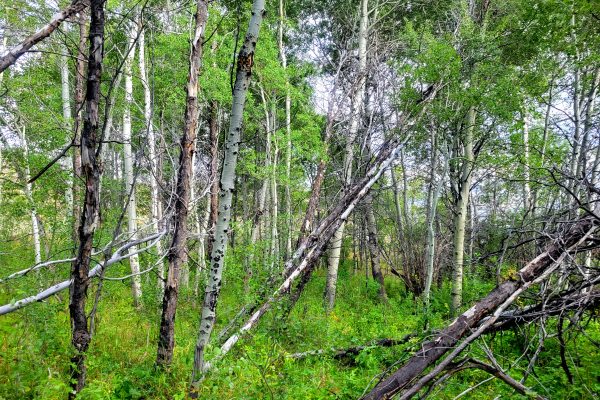

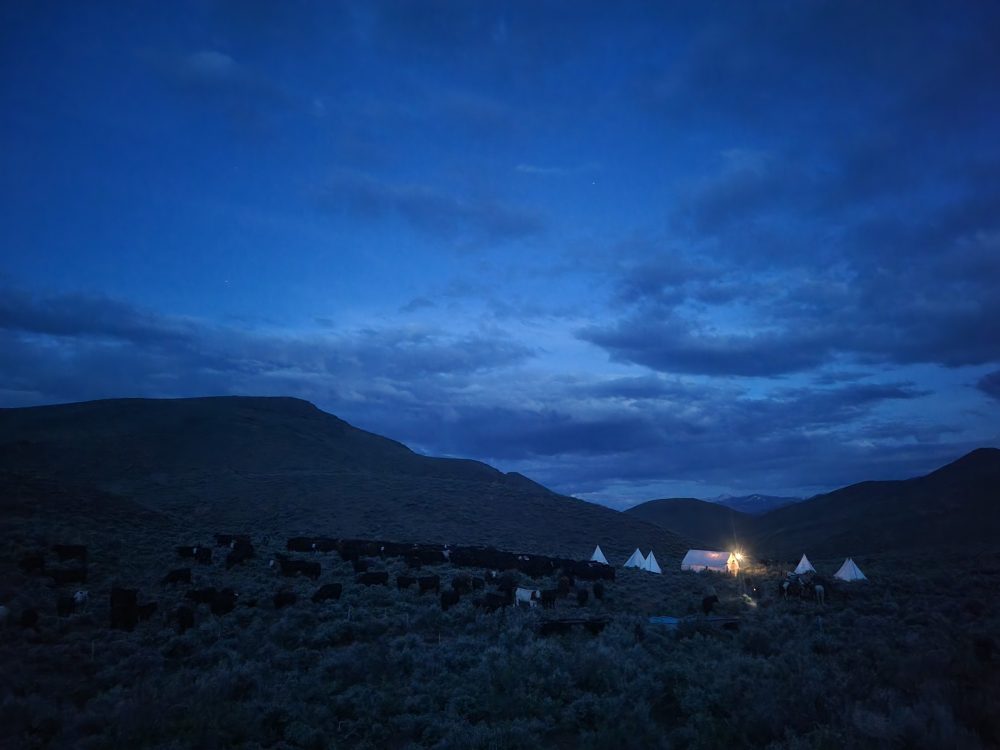
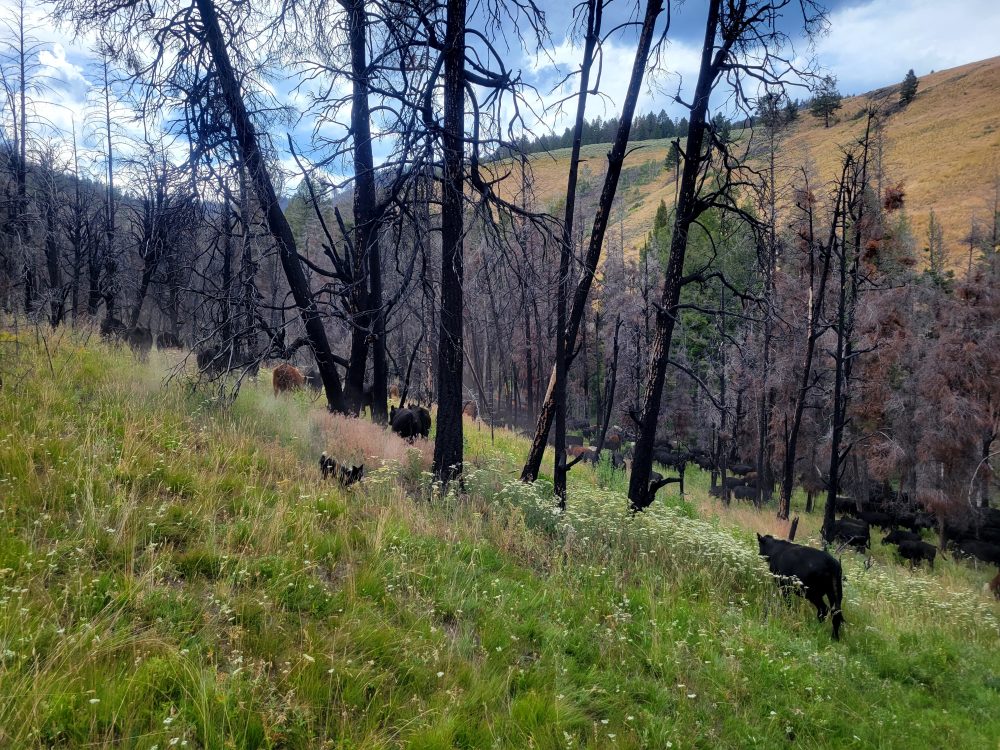

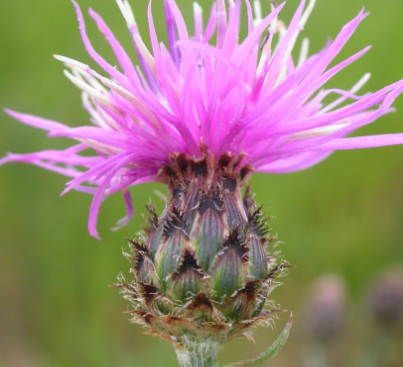
Doug
Please advise me how you feed your cattle to though the cold winter
We have a dry winter not cold no rain for 6 months or more on our grass veld
We supplement hay, vit and minerals
We love your ranch stories, please Jeep writing them
Best regards
Caryl Elzinga
Hi Doug. We are similar to you, although we get some snow in the winter. We try to save back as much stockpile (grass that is dormant but still standing and green at the base) as we can, but we too must supplement with hay through the coldest months. We harvest hay from the same pastures we graze through the summer, and use haying as a management tool to harvest grass that is growing too quickly for our grazing herd to keep up with. Hope that helps!!
Nels modine
Glen, I enjoy teading of your experiences especially when mom and Dad are written into story. Nels
Deb Olsen
I thank all of you for your continued hard work in trying to make a difference in our world despite what’s going on around us in the world, we can only hope and pray that others will eventually be educated as you so our world will be a better place for all.